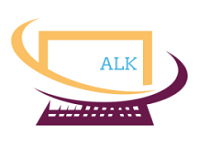As of my knowledge cutoff in September 2021, Petya is a type of ransomware that was first discovered in 2016. It is important to note that my information might not be up-to-date regarding specific outbreaks or developments after September 2021.
Petya ransomware is known for its ability to encrypt an infected computer’s entire hard drive, making it impossible for users to access their files and data unless a ransom is paid. Petya spreads primarily through malicious email attachments, compromised websites, or by exploiting vulnerabilities in outdated software.
Here are some key points about Petya ransomware:
- Encryption: Petya uses advanced encryption algorithms to lock the victim’s files, rendering them inaccessible. It targets various file types, including documents, images, videos, and databases.
- MBR Overwrite: Petya has a unique feature that allows it to overwrite the Master Boot Record (MBR) of the infected system. By doing so, it can prevent the computer from booting up properly, further increasing the impact of the attack.
- Worm-like behavior: Petya has worm-like capabilities, which means it can self-propagate across networks. It can exploit vulnerabilities in the Windows operating system to spread from one computer to another, making it particularly dangerous in corporate environments.
- Ransom note: Once the encryption process is complete, Petya displays a ransom note demanding payment in exchange for a decryption key. The note typically includes instructions on how to make the payment, usually in the form of a cryptocurrency like Bitcoin.
- Notable outbreaks: The Petya ransomware gained significant attention in 2017 during a large-scale outbreak that affected numerous organizations worldwide. This outbreak, often referred to as “NotPetya” or “Petya/ExPetr,” caused widespread disruption, particularly in Ukraine, but also impacted organizations globally.
- Patched vulnerabilities: In response to the Petya outbreak in 2017, Microsoft released security updates to address the vulnerabilities that the ransomware exploited. It is crucial to keep computer systems and software up to date to mitigate the risk of infection.
Given that my information might not include specific outbreaks or developments after September 2021, I recommend consulting reliable sources or the latest news to get the most recent information about any Petya ransomware outbreaks.



